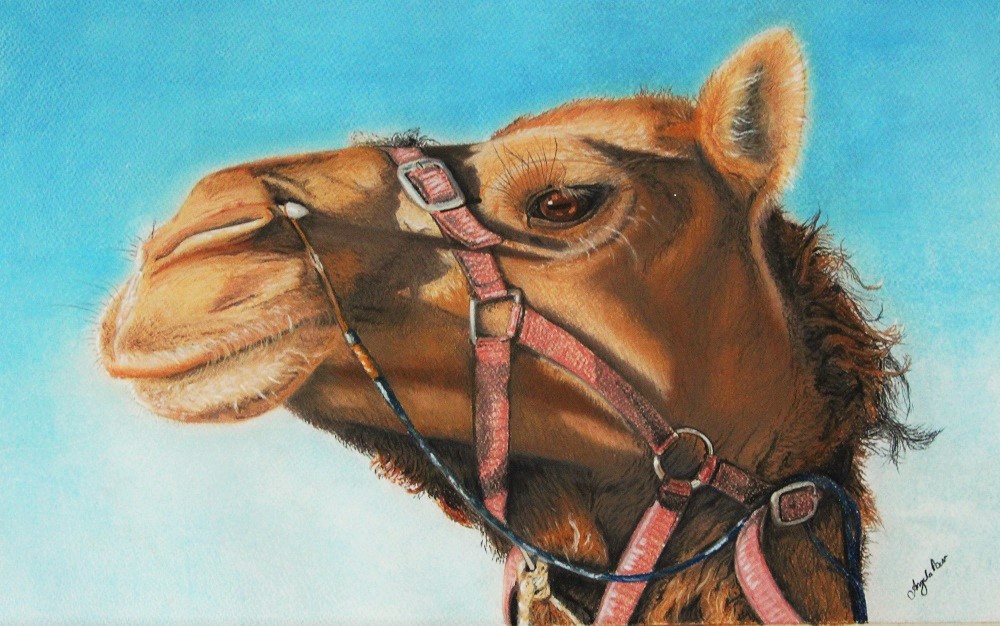Dixie Doo
Pastel on Canson paper (Sold)
64 cm W x 47 cm H
In 2014 I had the good fortune to join a 3-month camel expedition through the deserts of the Northern Territory and South Australia, with my Red Heeler cattle dog Ruby. The experience was phenomenal, trekking over 20kms daily with eight adult camels, 5 chickens and eventually 5 baby camels…Yes, they were born along the way, but that’s another story. My favourite camel, the one I bonded best with was Dixie, and this artwork is a tribute to her. Between 1870 and 1920, as many as 20,000 camels were imported into Australia from the Arabian Peninsula, India and Afghanistan, together with at least 2,000 handlers, or cameleers, from the same regions. The animals were mainly dromedaries: half-ton ungulates with a single hump, (Camelus dromedarius). They were ideally suited to the harsh, dry climate of the Australian interior: they could go weeks without water, and they had the stamina and strength to carry their loads and riders across what were often highly exposed, fiercely hot landscapes. Laden camels carrying wool and water, telegraph poles and railway sleepers, tea and tobacco became a fixture of outback life. By the 1930s, however, with the arrival of the internal combustion engine, and motorised transport, camels became almost redundant as pack-carriers. A four-legged mammal was no match for a goods vehicle, regardless of how stoic it remained in 40C heat. Thousands of camels were released into the wild, where, naturally, they thrived.

